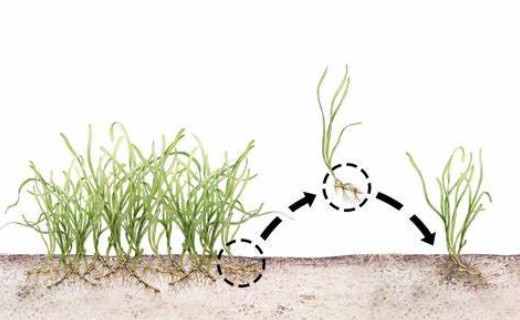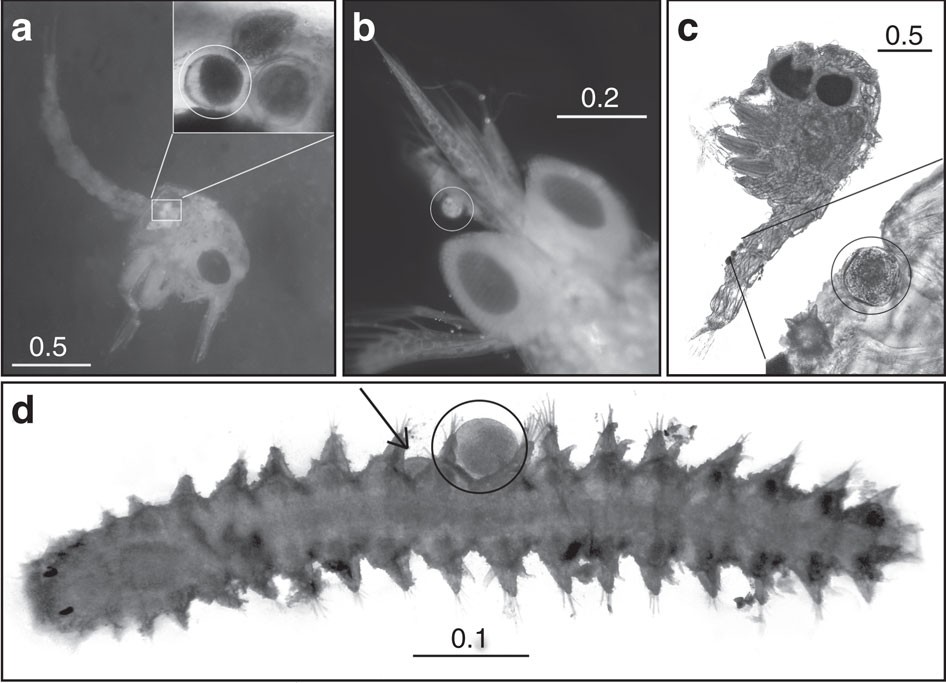Seagrasses are the only flowering plants that live submerged in seawater. They cannot survive out of the water or in freshwater for extended periods of time. So how have they colonized this nearshore, underwater environment? To start, they are grasses so they grow and spread (reproducing asexually) similar to most grasses in your lawn via rhizomes. Rhizomes are horizontal, underground stems that send up new leaves and roots adjacent and attached to the original ones. Seagrasses predominantly reproduce using this method. Fragments of this rhizomatic growth can break off during storms, when herbivores graze or with human activities such as anchoring. These fragments can survive drifting in the water column for weeks in some cases and then can settle and grow in a different location. This provides a mechanism of spreading genes and colonizing new areas.

Photo by: Li Yuqiang for China Dialogue Ocean
Purely rhizomatic growth or asexual reproduction leads to genetic homogeneity, essentially a large clonal organism. The largest known seagrass clone is a huge patch of Neptune, Posidonia oceanica that spreads across 15 km of seafloor in the Mediterranean Sea and is likely 1,000s to 10,000s of years old. As a large clone seagrass meadows are more vulnerable to disturbance events. Genetic diversity across a seascape ensures some of the seagrass plants, versus a whole meadow of clones, have different genes. This means some of the individuals will have slightly different characteristics that may allow them to survive a disturbance, such as a disease, while others may succumb it. Without this genetic diversity an entire meadow composed of a single clone could die off from a disease or other disturbance event. As human impacts continue to increase, disturbance events like diseases, ocean warming, tropical storms, coastal erosion and others are becoming more common. Thus it is critical for seagrasses to also reproduce sexually in order to create new combinations of genes across the population and become more resistant and resilient to environmental changes.
Just like grasses on land, seagrasses are flowering plants and reproduce sexually via pollination. However, the means of pollinating seagrass flowers is quite different underwater. On land wind is often the main mechanism for pollen to move and fertilize flowers. Underwater, currents, waves and tides fill this role. Pollen is released in mucilage (a thick, sticky substance) and drifts in the water with the tides, coastal currents, such as longshore drift that flows parallel to the shore, or via waves and the accompanying turbulence and swash. Most areas where seagrasses flourish only have waves during storm events and weak currents, leaving tidal changes to likely be the main abiotic driver of pollen movement. In the typically calm waters where seagrasses thrive, you might expect seagrasses to have flowers with both male and female reproductive organs together to make pollination easier, but this often leads to the same issue as asexual reproduction via rhizomes. The flowers more frequently self-pollinate leading again to a clone and no transfer of genes. Thus, we find seagrasses have separate male and female flowers (most species are dioecious) reducing the probability that self-pollination will occur. However, the chances of the microscopic pollen grains moving through the water column with the tides and settling on a tiny, short lived female flower far enough away to be genetically different are very slim! Yet, we still see genetic diversity within seagrass meadows and the reason for this has only recently become clearer.
Scientists have found evidence for another way for pollination to occur underwater, via pollinators! With no bees, birds, butterflies, bats or flies underwater, who are the pollinators? To date researchers have confirmed crustaceans (a sister group to the insects that pollinate land plants, both in Phylum Arthropoda), such as isopods, copepods, ostracods, mysid shrimp, tanaids, cumaceans and zoea (larval crabs), as well as polychaete worms as pollinators. Many seagrasses flower at night, which is also when the crustaceans and polychaete worms mentioned above were observed, as they emerge from the sediments nocturnally to feed. The flowers bloom at the base of the seagrass leaves near the substrate giving those critters easy access to the sticky pollen.

Photo by: Van Tussenbroek, B. I. for Nature Communications
It is likely many other types of pollinators exist for seagrasses, especially for the species that flower during the day and these may even include larger species in additional phyla. This area of research is in its infancy but it is very exciting to learn that similar reproductive mechanisms are operating in seagrassses to the plants we find on land and that most of the action is happening at night. Once pollination occurs the seeds can drift with the water for many kilometres but most of the seeds settle nearby. The seeds can be consumed by large herbivores, such as green sea turtles and dugongs in Australia, and transported even farther distances where they start to grow in the nutrient rich excrement of these large species.

Photo by: Laura Guerrero-Meseguer, Carlos Sanz-Lázaro and Arnaldo Marín for PLoS ONE

Photo by: Laura Guerrero-Meseguer, Carlos Sanz-Lázaro, Arnaldo Marín for FigShare
We are seeking to learn more about seagrass flowering locally including its timing, environmental drivers and the pollinator species facilitating the process in order to conserve this critical habitat and ensure its viability into the future. Having multiple means of reproduction available, high pollinator diversity, seed dispersers, increased gene flow, high connectivity and fewer disturbances will likely be essential steps to protect and restore these important seagrass communities. Communities that help to guard our shorelines from storms; filter nutrients, sediments and pollutants; act as nurseries for many fisheries species; and store more carbon per area than terrestrial forests. Let’s keep seagrasses healthy so the evening soiree continues.
Do you want to see some of these underwater pollinators in action? Check out this video compiled by Brigit van Tussenbroek and colleagues!





